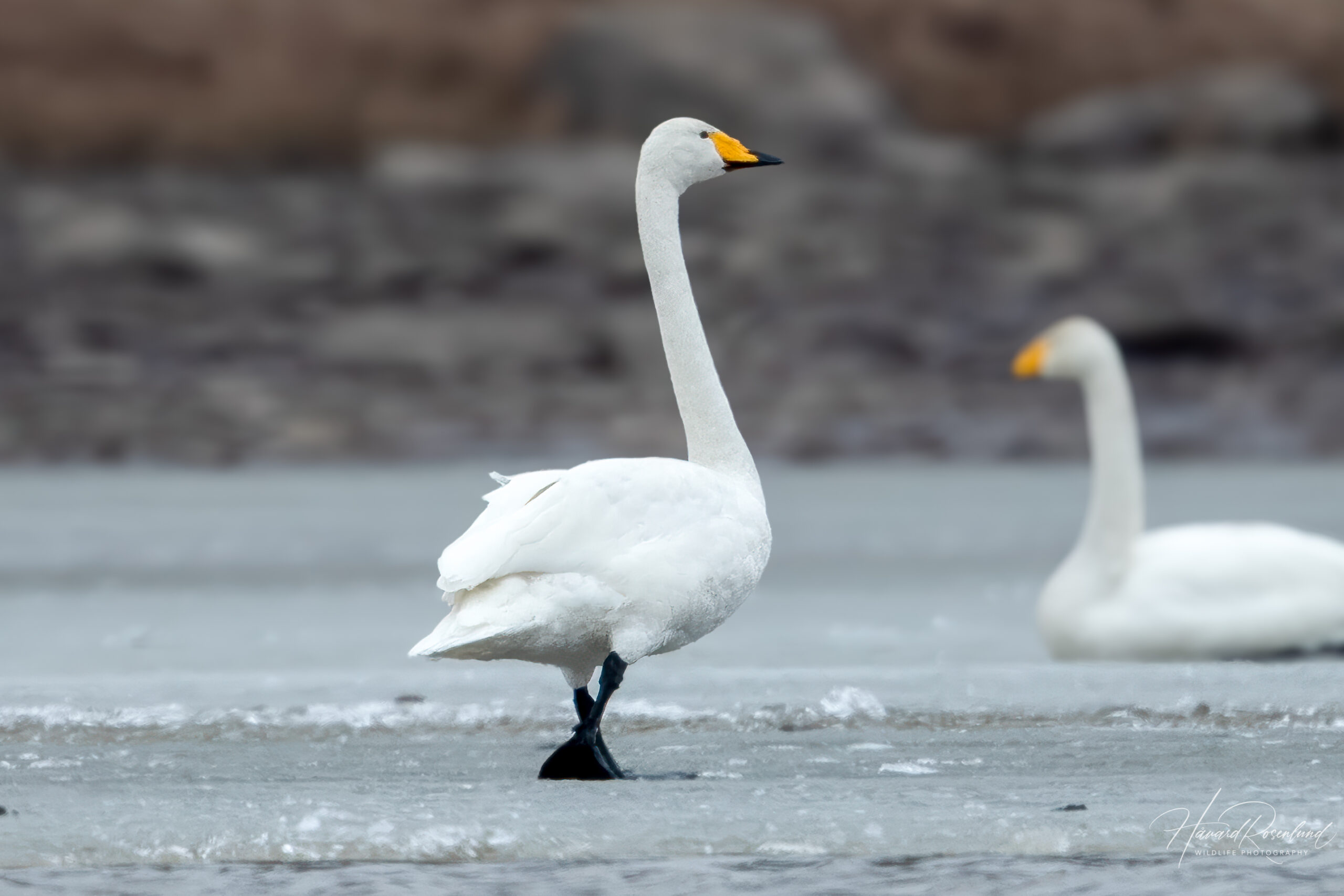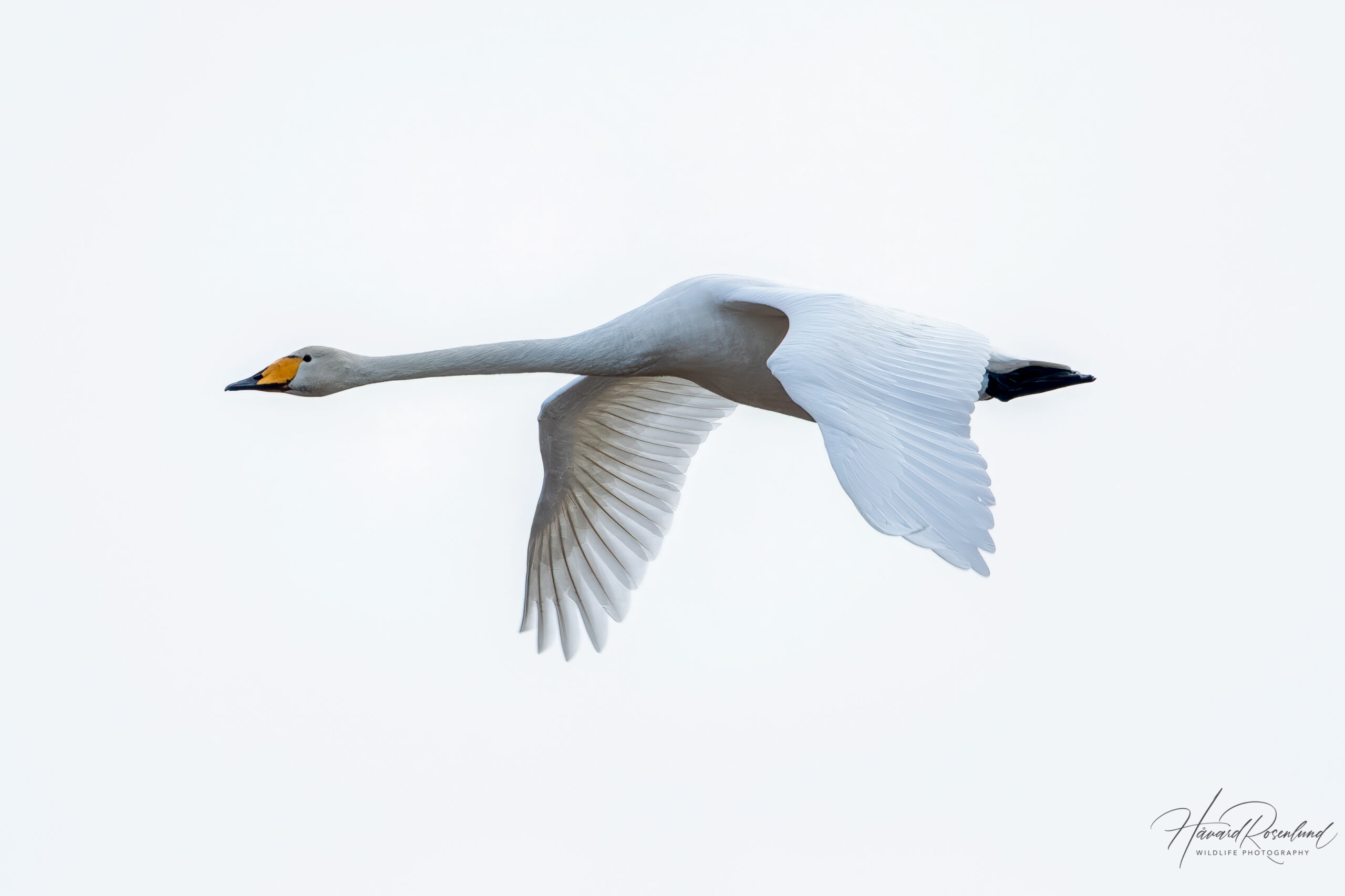Description
The whooper swan (Cygnus cygnus) is a large swan species, notable for its long, slender neck, and a black and yellow bill. It breeds in Iceland, Scandinavia, and parts of Russia, while their wintering grounds include parts of the UK, Central Europe, and East Asia. Adult whooper swans typically measure between 140 to 165 cm (55-65 in) in length with a wingspan that ranges from 205 to 275 cm (80-108 in). These swans are known for their loud and musical calls, which are often heard during their strong, coordinated, and powerful flight. It is similar in appearance to the smaller tundra swan (Cygnus columbianus), whose yellow beak markings are less extensive.
Diet & habitat
Whooper swans are commonly found on lakes, slow-flowing rivers, and estuaries, although during migration, they can also be spotted in coastal areas and agricultural lands. They feed mainly on water plants, which they reach with their long necks, although during winter and migration, they may also graze on fields, consuming crops and grasses. Their diet is supplemented by small aquatic animals.
Migration
This species is known for its impressive migratory patterns, often traveling long distances between breeding and wintering sites. Migration occurs in large flocks that can be spectacular to observe. They are known to follow specific routes year after year, which can include stopovers at traditional resting sites where they refuel for the journey ahead.
Nesting
Breeding usually begins in late April to May. Whooper swans are monogamous and often pair for life. They demonstrate intricate courtship displays that include synchronized swimming, head bobbing, and mutual preening with their mates. These rituals strengthen pair bonds and are essential for maintaining monogamy across breeding seasons.
Nests are large and built on the ground near water. The female lays 4 to 7 eggs, which are incubated for about 36 days. The cygnets are able to swim and feed themselves shortly after hatching but remain with the parents throughout the winter until the next breeding season. Both parents are highly protective, escorting their young closely during feeding and migration, and aggressively defends them against potential predators.
Status
The whooper swan is classified as least concern by the IUCN, although it faces threats from habitat loss and degradation, particularly due to drainage of wetlands, pollution, and disturbances from human activities. Conservation efforts include habitat restoration and protection measures, particularly in their breeding areas.







